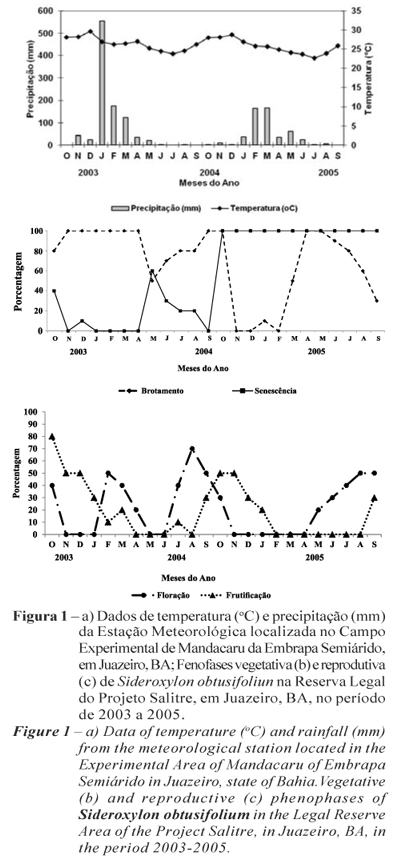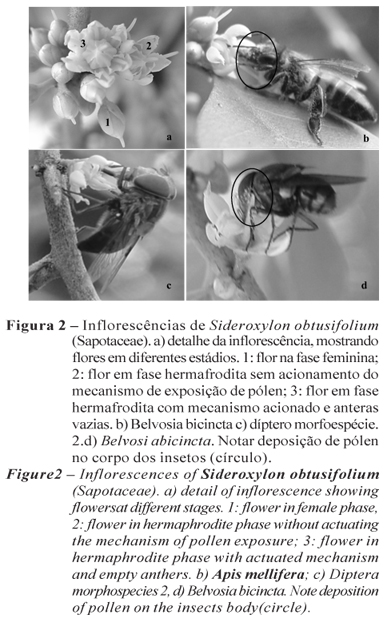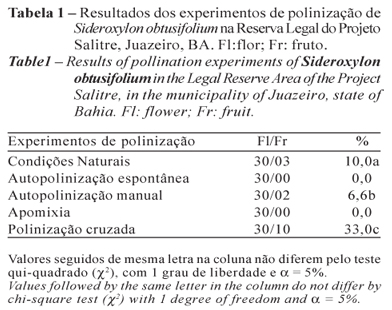The aim of this work was to study phenology, reproductive biology and flower visitors of Sideroxylon obtusifolium in caatinga area. The study was conducted from October 2003 to September 2005, in natural populations o f S. obtusifolium in Legal Reserve Area of the Project Salitre, municipality of Juazeiro, state of Bahia, Brazil. The phenological data showed that vegetative phenophases (sprouting and leaf senescence) occurred throughout the year, while flowering and fruiting were recorded in the dry and rainy seasons, respectively. The flowers are hermaphrodite, cream color, exhale odor, secrete small amount of nectar (<1µL), have diurnal anthesis and protogynous dichogamy. Among the floral visitors, bees, wasps, flies and butterflies were recorded. Apis mellifera and dipteral morphospecies 1 and 2 were considered as pollinators of this specie. The reproduction system of S. obtusifolium is facultatively autogamous, producing fruit by self-pollination (6.6%) and by cross-pollination (33%). Differences in phenological registry, floral biology and the pollinators agents were found when compared with other environments, indicating that the climatic variables can be one of several factors that influence this relationship.
Caatinga; Protogynous; Myophily





